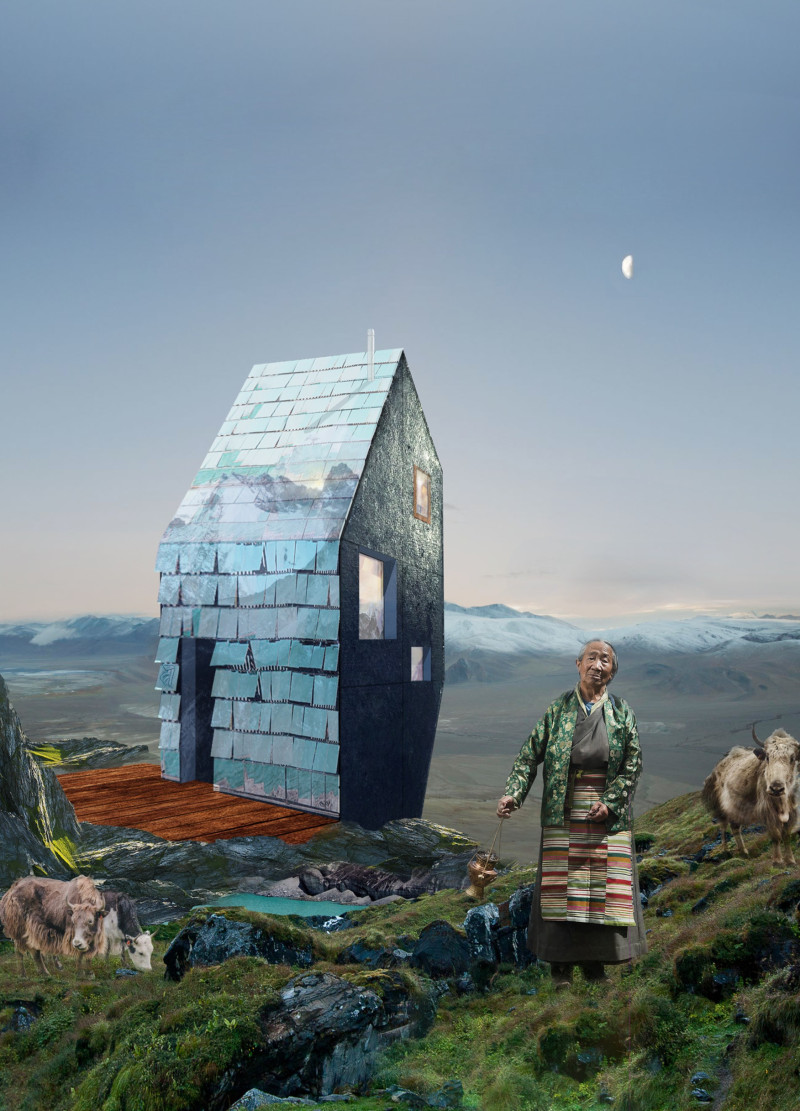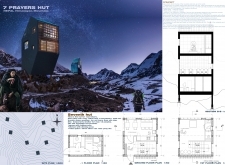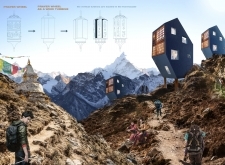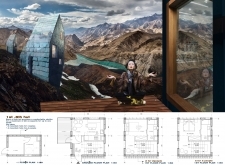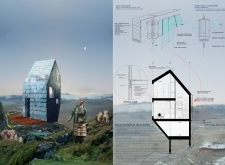5 key facts about this project
### Overview
Located in the Himalayan Mountains of Nepal, the "7 Prayers Hut" project addresses the specific needs of trekkers and local inhabitants while responding to the challenging environment. The design aims to provide temporary refuge, facilitating rest, nourishment, and contemplation for those journeying through this significant landscape. By integrating functionality with cultural context, each hut serves as a communal space that enhances both social interaction and individual reflection.
### Spatial Configuration and Features
Each hut is designed to accommodate up to 12 individuals, promoting a balance between communal and private areas. The architecture is inspired by traditional Himalayan prayer wheels, leading to the inclusion of vertical wind turbines that serve both aesthetic and functional purposes. Sustainable energy generation is achieved through these turbines, leveraging the region's natural wind currents. The modular design allows for various group sizes, ranging from intimate shelters for couples to larger accommodations, thereby catering to diverse user needs.
### Materiality and Sustainability
Local materials are integral to the project, with wooden frames providing structural integrity and thermal regulation while ensuring environmental harmony. Weather-resistant finishes and roofing composed of stone or metal shingles align with the color palette of the surrounding landscape, enhancing durability against harsh climatic conditions. The strategic incorporation of glass invites natural light while offering expansive views, enriching the users' emotional and spiritual experience. The project's sustainable ethos is emphasized through the potential use of solar panels and renewable energy sources, reflecting a commitment to minimizing ecological impact.


